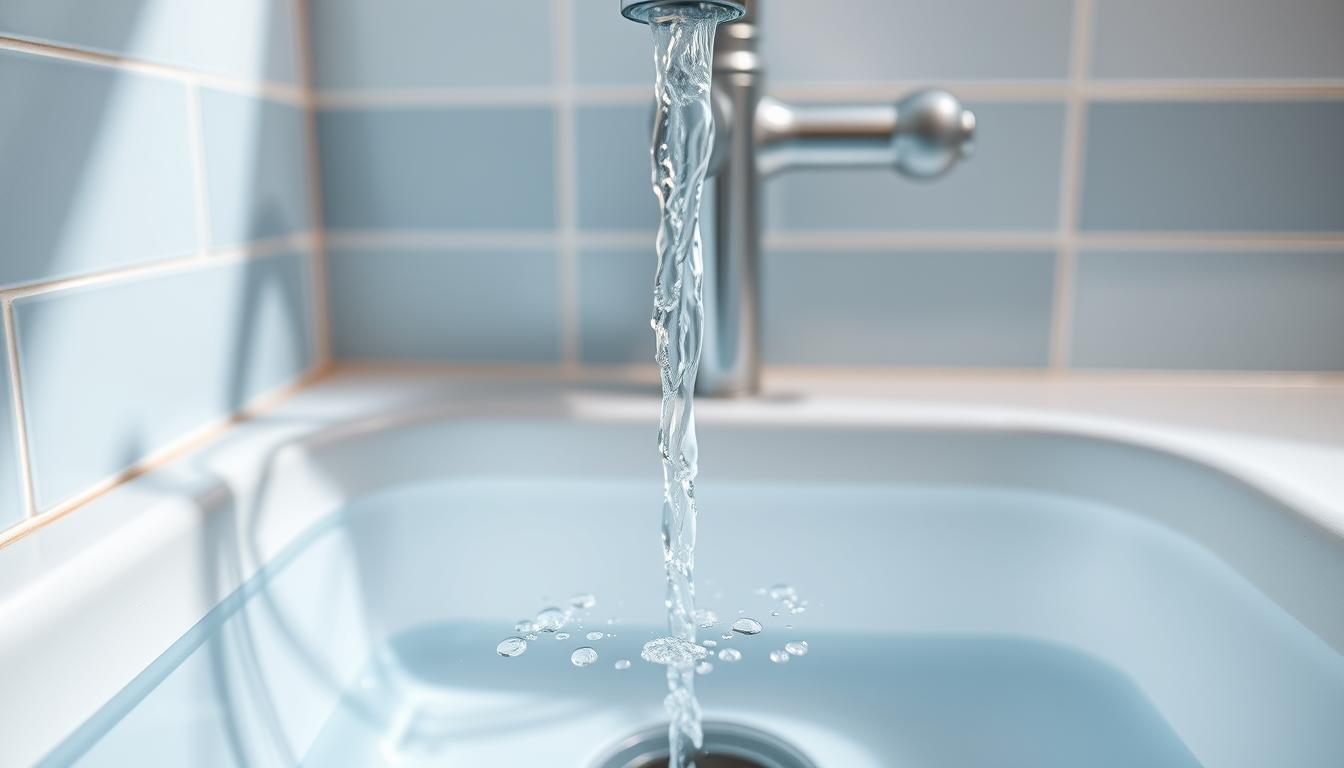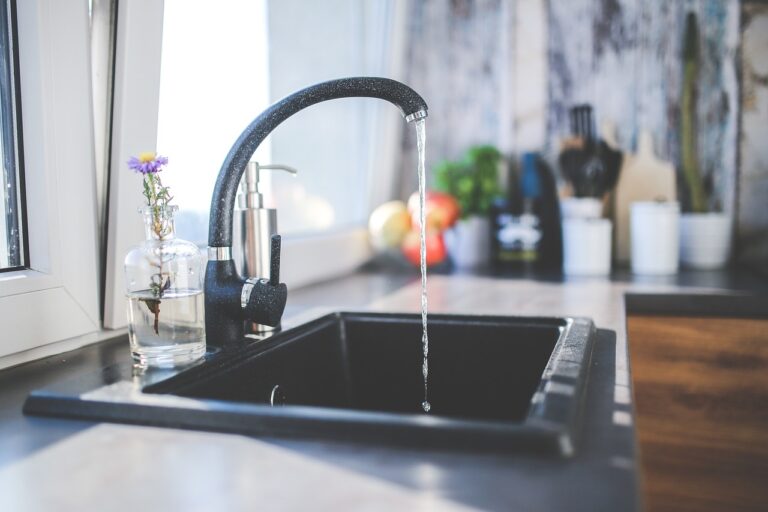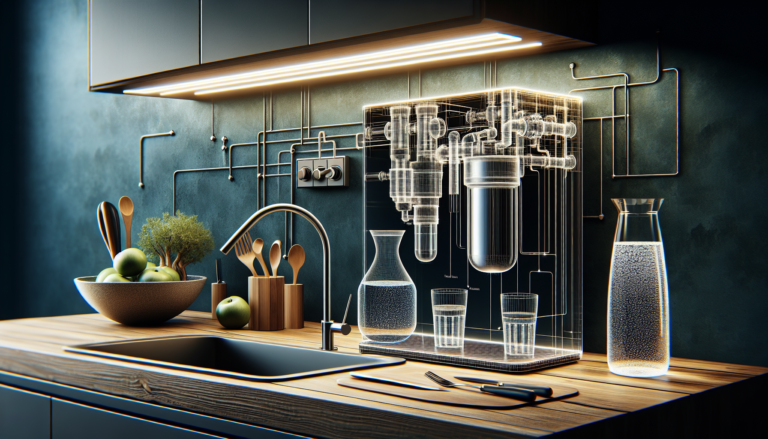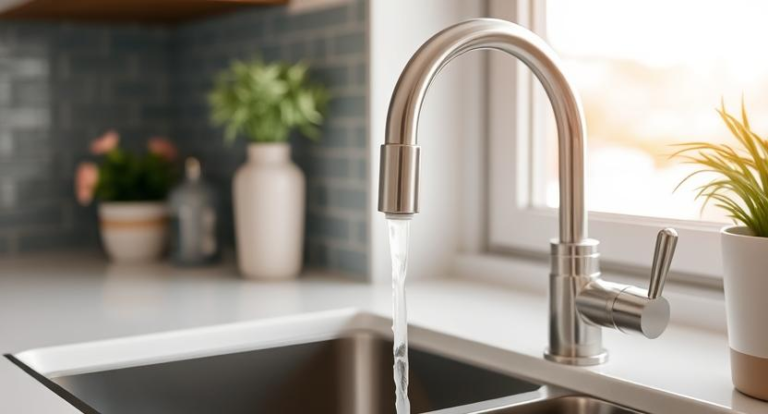6 Signs Your Tap Water Might Be Contaminated
Is the water coming out of your faucet safe to drink? Many people are unaware of the quality of their drinking water, which can be contaminated with various substances, posing serious health risks.
Contaminated water can lead to a range of health issues, from mild gastrointestinal problems to severe conditions like cancer. Being aware of the signs of contaminated water is crucial for protecting your health and the health of your family.
Recognizing the symptoms of contaminated water is the first step towards ensuring your drinking water safety. In this article, we will explore the key indicators that your tap water might be contaminated.
Key Takeaways
- Understanding the risks associated with contaminated tap water.
- Identifying common signs of water contamination.
- Learning how to ensure your drinking water is safe.
- Recognizing the health implications of consuming contaminated water.
- Taking steps to protect your family’s health.
The Importance of Clean Drinking Water
Access to clean drinking water is fundamental to maintaining good health, and its importance cannot be overstated. Ensuring the quality of drinking water is crucial for preventing waterborne illnesses and maintaining overall well-being.
Why Water Quality Matters for Your Health
Water quality directly impacts human health. According to The Centre for Disease Control, contaminated water can cause a wide range of health issues, including gastrointestinal illnesses, neurological disorders, and reproductive problems. Regular water quality testing is essential to identify potential contaminants and take corrective actions.
Poor water quality can lead to various health complications, making it vital to be aware of the potential risks associated with contaminated drinking water.
Common Sources of Water Contamination
Understanding the common sources of water contamination is key to mitigating risks. Common contaminants include bacteria, viruses, and chemicals, which can enter the water supply through various means, such as agricultural runoff, industrial waste, and aging infrastructure. Identifying these sources is the first step towards ensuring clean drinking water.
By recognizing the importance of clean drinking water and understanding the potential sources of contamination, individuals can take proactive steps to safeguard their health.
Understanding Water Contamination in the United States
Understanding the nuances of water contamination in the U.S. requires examining both the national infrastructure and regional specifics. The country’s aging water infrastructure plays a significant role in the quality of tap water.
Current State of U.S. Water Infrastructure
The U.S. water infrastructure is a vast network of pipes, treatment plants, and distribution systems. However, much of this infrastructure is aging, with some pipes dating back to the early 20th century. Leaks, ruptures, and contamination are common issues associated with outdated infrastructure.
Some key statistics highlighting the state of U.S. water infrastructure include:
- Over 240,000 water main breaks occur annually in the U.S.
- The American Water Works Association estimates that replacing all U.S. water infrastructure would cost over $1 trillion.
- Aging infrastructure is not limited to pipes; many treatment plants are also in need of upgrade or replacement.
Regional Differences in Water Quality
Regional differences in water quality are significant due to variations in source water, treatment processes, and local environmental conditions. For instance, areas with agricultural runoff may have higher levels of nitrates and pesticides in their water supply.
Some regions face unique challenges:
- The Midwest, with its extensive agricultural lands, often deals with chemical runoff.
- Coastal areas may experience saltwater intrusion into freshwater sources.
- Urban areas might have issues with lead contamination due to older plumbing.
These regional differences underscore the need for tailored approaches to addressing water contamination.
6 Signs Your Tap Water Might Be Contaminated
If you’re concerned about the quality of your tap water, look out for these six key signs that could signal contamination. Tap water is a vital resource, and its contamination can have serious health implications. Being aware of the warning signs is the first step in protecting yourself and your family.
Overview of Warning Signs
There are several indicators that may suggest your tap water is contaminated. These include unusual color, taste, or odor, as well as the presence of sediment or particles in the water. Other signs can be more subtle, such as plumbing issues or stains on fixtures and appliances. Being vigilant about these signs can help you identify potential contamination early.
The six signs to watch for are:
- Unusual color or cloudiness
- Strange taste or odor
- Plumbing issues and stains
- Health symptoms after consumption
- Sediment or particles in water
- Scale buildup and soap scum
Understanding these signs can help you take proactive steps to ensure your tap water is safe to drink.
When to Take Immediate Action
If you notice any of the six signs mentioned, it’s essential to take immediate action. This may involve using a water testing kit to determine the quality of your tap water or contacting a professional for assistance. In some cases, you may need to switch to an alternative water source until the issue is resolved.
Being proactive about tap water contamination can significantly reduce the risk of health problems. By staying informed and taking prompt action when necessary, you can help protect your family’s health and well-being.
Sign #1: Unusual Color or Cloudiness
One of the most immediate signs that your tap water might be contaminated is an unusual color or cloudiness. Tap water is expected to be clear and colorless. Any deviation from this could indicate a problem.
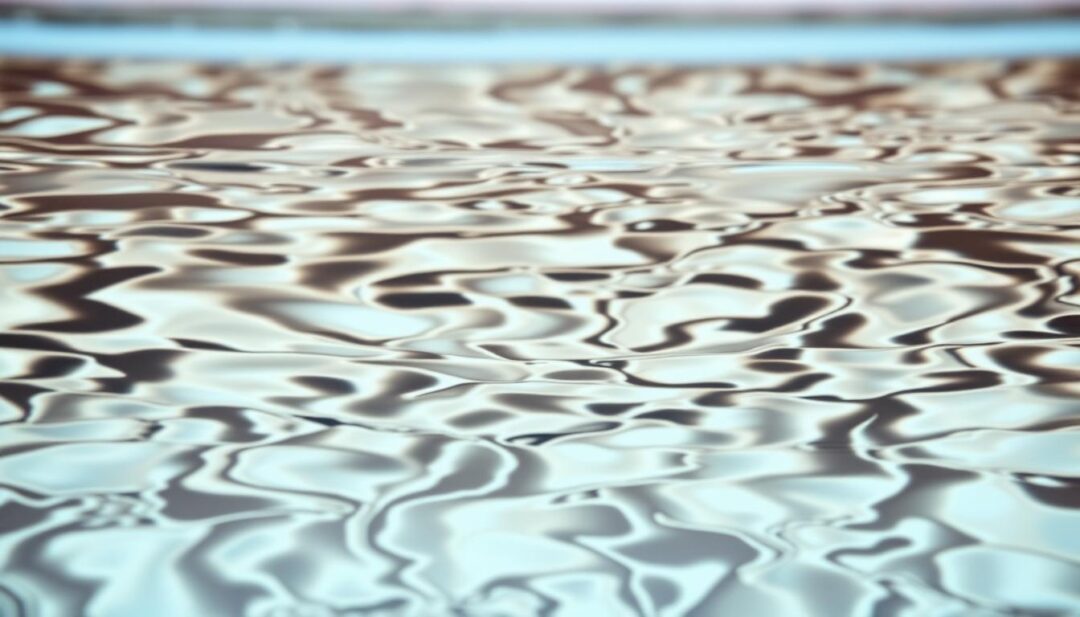
What Different Colors Indicate
The color of your tap water can provide clues about its quality. Different colors may indicate different contaminants.
Brown or Yellow Water
Brown or yellow water often suggests the presence of rust or sediment. This could be due to corroded pipes or natural sources like iron or manganese in the water supply.
Blue or Green Tints
A blue or green tint in your tap water might indicate the presence of certain chemicals or algae growth. While this is less common, it’s a sign that you should investigate further.
When Cloudiness Is Concerning
Cloudiness or turbidity in tap water can be caused by tiny particles or air bubbles. While sometimes harmless, persistent cloudiness could signal contamination.
| Color/Turbidity | Possible Cause | Concern Level |
|---|---|---|
| Brown/Yellow | Rust, Iron, Manganese | High |
| Blue/Green | Chemicals, Algae | Medium |
| Cloudy/Turbid | Particles, Air Bubbles | Variable |
If you notice any unusual color or cloudiness, it’s a good idea to contact your water utility company or local health department to report the issue and seek guidance.
Sign #2: Strange Taste or Odor
Tap water with a strange taste or odor is not just unpleasant; it can be a warning sign of contamination. While it’s normal for tap water to have some taste or smell due to treatment processes, unusual or strong odors can indicate a problem.
Common Taste Problems and Their Causes
Strange tastes in tap water can be caused by various factors, including the presence of certain minerals or contaminants. For instance, a metallic taste might indicate corrosion in pipes, while a salty taste could suggest contamination from seawater or salt deposits.
Common causes of taste issues include:
- High levels of chlorine or chloramines used in water treatment
- Presence of sulfur or iron bacteria
- Decay of organic matter
- Contamination from industrial or agricultural runoff
Identifying Dangerous Smells
Unusual odors can be a sign of contamination. It’s essential to identify the type of smell to understand the potential issue.
Chlorine or Bleach Smell
A strong chlorine or bleach smell is often associated with the water treatment process. While it’s generally not harmful, excessive levels can cause health concerns. “The use of chlorine in water treatment is a common practice, but high levels can lead to respiratory issues and other health problems,” according to water quality experts.
Rotten Egg or Sulfur Odor
A rotten egg or sulfur smell is typically caused by the presence of hydrogen sulfide gas. This can occur naturally or as a result of bacterial activity in the water distribution system. This type of odor is not only unpleasant but can also indicate a potential health risk.
As noted by water quality specialists, “Hydrogen sulfide is a toxic gas that can cause health issues at high concentrations. It’s crucial to investigate the source of such odors and take corrective action.”
Sign #3: Plumbing Issues and Stains
Contaminated tap water often manifests through various plumbing issues and stains in your home. These signs can be subtle, but they are crucial indicators of potential water contamination.
Mineral Buildup and Corrosion
Mineral buildup and corrosion are common issues in plumbing systems that can be exacerbated by contaminated tap water. Mineral buildup, often seen as scale or lime deposits, can clog pipes and reduce water flow. Corrosion, on the other hand, can lead to leaks and contamination of the water supply.
Stains on Fixtures and Appliances
Stains on fixtures and appliances are another sign that your tap water might be contaminated. These stains can be caused by various minerals and metals present in the water.
Rust and Iron Stains
Rust and iron stains are typically reddish-brown and can appear on sinks, toilets, and appliances. They are often a sign of iron contamination in the water supply.
Blue-Green Stains from Copper
Blue-green stains, usually found around faucets and drains, indicate copper corrosion. This can be due to acidic water corroding copper pipes.
Being aware of these signs can help you identify potential issues with your tap water early on. Regularly inspecting your plumbing system and fixtures for these indicators is a proactive step towards ensuring your water is safe to drink.
Sign #4: Health Symptoms After Consumption
Health symptoms after drinking tap water can be a sign of contamination. Consuming contaminated tap water is associated with various adverse health effects, ranging from mild gastrointestinal issues to severe skin irritations.
Gastrointestinal Issues
Gastrointestinal problems are among the most common health symptoms of tap water contamination. These issues can include diarrhea, nausea, and stomach cramps. If you or your family members are experiencing persistent gastrointestinal discomfort after consuming tap water, it may indicate contamination.
Skin Irritations and Rashes
Skin irritations and rashes can also be a sign that your tap water is contaminated. Certain contaminants can cause allergic reactions or irritate the skin, leading to discomfort and visible symptoms.
Short-term Symptoms
Short-term health symptoms can include immediate reactions such as gastrointestinal upset or skin irritation. These symptoms often resolve once the consumption of contaminated water is stopped.
Long-term Health Concerns
Long-term exposure to contaminated tap water can lead to more serious health concerns, including increased risk of certain cancers, neurological effects, and reproductive issues. It’s crucial to address any contamination issues promptly to mitigate these risks.
| Health Symptoms | Possible Causes |
|---|---|
| Gastrointestinal Issues | Bacterial, viral, or parasitic contaminants |
| Skin Irritations | Chemical contaminants, heavy metals |
Sign #5: Sediment or Particles in Water
The presence of sediment or particles in tap water is a significant sign that something is amiss. When you notice particles or sediment, it’s essential to identify their source to ensure your water is safe to drink.
Identifying Different Types of Particles
Particles in tap water can vary widely in their composition. Common types include sand, dirt, flakes, and debris. Each type of particle can indicate different issues with your water supply.
Sand and Dirt Particles
Sand and dirt particles often result from aging infrastructure or issues with the water source. These particles can be a sign of erosion or sediment disturbance in the water supply system.
Flakes and Debris
Flakes and debris might indicate corrosion within your plumbing system or the presence of organic matter. Identifying the exact nature of these particles is crucial for determining the necessary course of action.
When Sediment Indicates Serious Problems
While some sediment may be harmless, certain types can signal serious contamination. For instance, the presence of certain metals or microorganisms can be hazardous to health.
| Type of Particle | Possible Cause | Health Risk |
|---|---|---|
| Sand/Dirt | Aging Infrastructure | Low |
| Flakes/Debris | Corrosion/Organic Matter | Moderate to High |
Noticing sediment or particles in your tap water warrants further investigation. Using a water filter or having your water professionally tested can help determine the safety of your drinking water.
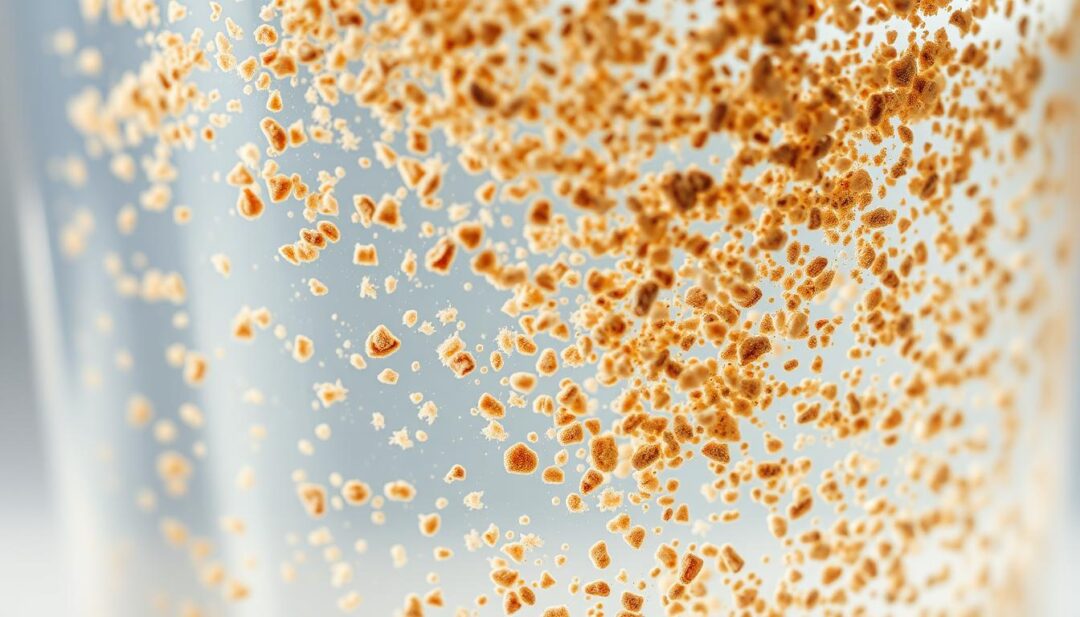
Sign #6: Scale Buildup and Soap Scum
Scale buildup and soap scum in your home can be more than just a nuisance; they might be indicators of a larger issue with your tap water. While they are often associated with hard water, they can also be signs of contamination. Understanding the cause is crucial to finding the right solution.
Differentiating Between Hard Water and Contaminated Water
Hard water contains high levels of minerals such as calcium and magnesium, which can lead to scale buildup. On the other hand, contaminated water may contain various pollutants that can cause soap scum and other issues. It’s essential to determine whether your water is hard or contaminated to apply the correct fix.
Impact on Appliances and Plumbing
Both scale buildup and soap scum can have significant effects on your home’s appliances and plumbing. Scale buildup can reduce the efficiency and lifespan of appliances like water heaters and dishwashers, while soap scum can clog pipes and affect water flow.
Testing for Hardness vs. Contamination
To address the issue, you first need to test your water. Hardness can be tested using a simple water hardness test kit, while contamination requires a more comprehensive water quality test.
Solutions for Different Types of Buildup
If your water is hard, a water softener can help reduce scale buildup. For contaminated water, a more advanced filtration system may be necessary to remove pollutants. Here are some common solutions:
| Issue | Cause | Solution |
|---|---|---|
| Scale Buildup | Hard Water | Water Softener |
| Soap Scum | Contaminated Water | Advanced Filtration System |
| Both Scale and Soap Scum | Combination of Hard and Contaminated Water | Combination of Water Softener and Filtration System |
In conclusion, scale buildup and soap scum are not just aesthetic issues; they can be indicators of underlying problems with your tap water. By understanding the cause and applying the appropriate solution, you can protect your home’s appliances and plumbing, ensuring a safer and more efficient water supply.
How to Test Your Tap Water Effectively
Tap water testing is a simple yet effective way to detect potential issues before they become serious problems. Ensuring your drinking water is safe is crucial for your health.
DIY Water Testing Kits
DIY water testing kits are a convenient first step in assessing your tap water quality. These kits usually test for common contaminants like lead, chlorine, and bacteria. However, their accuracy can vary, and they might not detect all potential issues.
Professional Water Quality Testing
For a more comprehensive analysis, consider hiring a professional to test your tap water. They can detect a wider range of contaminants, including heavy metals and pesticides.
What Tests to Request
When opting for professional water quality testing, it’s essential to know what tests to request. Common tests include:
- Lead and copper testing
- Bacteria and virus testing
- Nitrate and nitrite testing
Understanding Test Results
Once you receive your test results, understanding what they mean is crucial. Look for concentrations of contaminants and compare them to EPA standards.
| Contaminant | EPA Limit | Your Test Result |
|---|---|---|
| Lead | 0.015 mg/L | 0.005 mg/L |
| Chlorine | 4 mg/L | 1.2 mg/L |
| Bacteria | 0 colonies/mL | 0 colonies/mL |
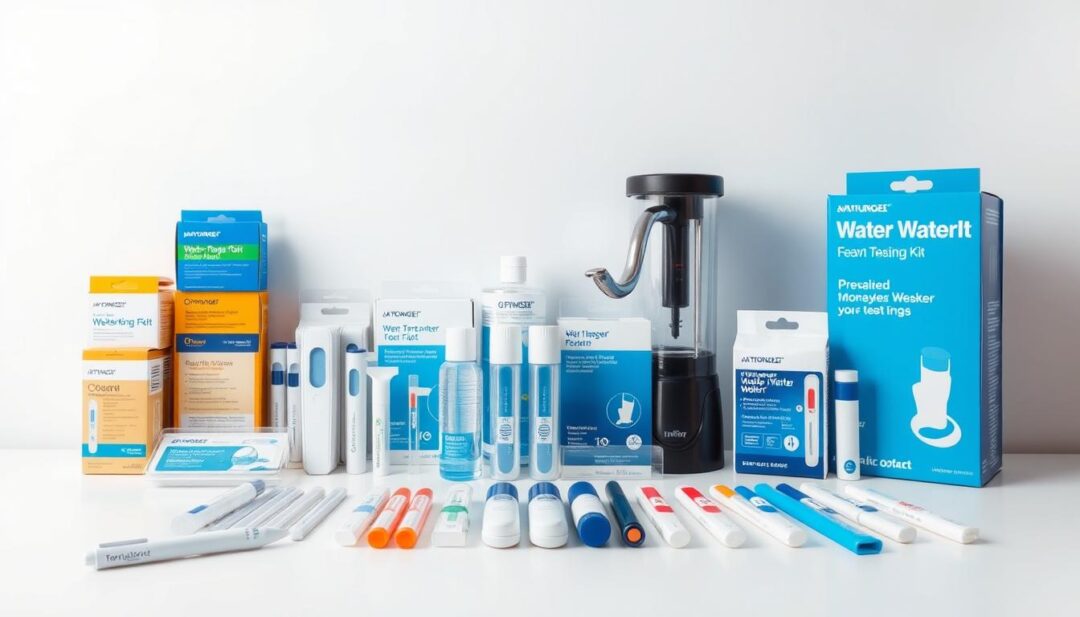
Water Filtration Solutions for Safer Drinking Water
With growing concerns about tap water quality, investing in a reliable water filtration system is becoming increasingly important. Water filtration solutions can significantly improve the safety and taste of drinking water, making them a valuable addition to any household.
Types of Water Filtration Systems
There are various types of water filtration systems available, catering to different needs and preferences. These include:
- Activated carbon filters
- Reverse osmosis systems
- Ultraviolet (UV) light disinfection
- Ion exchange systems
Choosing the Right Solution for Your Home
When selecting a water filtration system, it’s essential to consider factors such as effectiveness, maintenance requirements, and cost. Point-of-use systems are installed at a single faucet, while whole-house systems treat water throughout the entire home.
Point-of-Use vs. Whole-House Systems
Point-of-use systems are ideal for households that want to improve water quality at a specific tap, whereas whole-house systems provide comprehensive protection. The choice between these systems depends on your specific needs and budget.
Cost Considerations and Effectiveness
| System Type | Cost | Effectiveness |
|---|---|---|
| Activated Carbon | $50-$200 | Removes chlorine, taste, and odor |
| Reverse Osmosis | $200-$600 | Removes up to 99% of contaminants |
| UV Disinfection | $100-$500 | Kills bacteria and viruses |
Conclusion: Protecting Your Family’s Water Supply
Protecting your family’s water supply is crucial for maintaining good health. Being aware of the signs of tap water contamination is the first step in ensuring clean drinking water. Throughout this article, we’ve discussed the common indicators of contaminated tap water, from unusual color or cloudiness to scale buildup and soap scum.
By recognizing these signs and taking action to test and filter your water, you can significantly reduce the risk of waterborne illnesses. Regular testing and filtration can provide peace of mind, knowing that your family has access to clean drinking water.
Investing in a reliable water filtration system is a proactive measure in protecting your family’s water supply. With the right system, you can enjoy clean drinking water, free from contaminants and minerals that can cause harm. Take control of your family’s health by ensuring access to clean drinking water.

